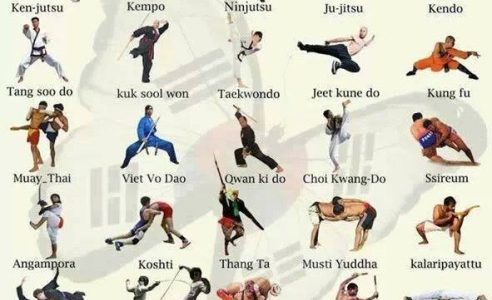Martial arts have a remarkable history that extends centuries and continents. You may find it intriguing just how ancient practices like Shuai Jiao and Kalaripayattu prepared for modern fight techniques. These self-controls not just highlight physical skills however also show the societies that birthed them. As https://www.bigcountrynewsconnection.com/idaho/arnetts-martial-arts-america-to-hold-womens-self-defense-seminar-on-january-28/article_219afd28-9788-11ed-9ca1-87bf3e0940af.html discover their advancement, consider just how globalization has actually transformed these standard kinds into crossbreed styles. What impacts do you think have formed today's martial arts landscape?
Ancient Martial arts: The Structures of Battle
As you explore the world of old martial arts, you'll find the abundant structures that shaped fight methods across societies. Very early practices concentrated on Self-Defense and survival, commonly incorporating strikes, hurting, and weapons.
In old China, for instance, techniques like Shuai Jiao emphasized tosses and joint locks, while India's Kalaripayattu showcased dexterity and fluid movement. Japanese samurai developed Kenjutsu, a refined swordsmanship that highlighted self-control and method.
These martial arts served not just for fight yet additionally as a means of individual development, instilling worths like regard and determination. The blending of these methods over time prepared for the diverse martial arts you see today, each mirroring the distinct ideologies and demands of its society.
The Social Impact on Martial Arts Development
While martial arts usually reflect the functional requirements of a society, they likewise personify the social values and ideas of their origins. When you discover different martial arts, you'll discover exactly how they're affected by religion, viewpoint, and social norms.
As an example, the focus on respect and technique in Japanese martial arts originates from Zen Buddhism and samurai society. On the other hand, Brazilian Jiu-Jitsu promotes flexibility and method, formed by the demand for performance in a varied, multicultural setting.
You might discover that the routines, attires, and training methods reflect an area's history and identification. By comprehending these social influences, you deepen your recognition of martial arts and their duty in shaping human experiences across the globe.
Modern Adaptations and the Globalization of Martial arts
Martial arts have transformed substantially in recent decades, adapting to modern culture and worldwide influences. You'll see that conventional forms have combined with modern strategies, developing hybrid styles like mixed martial arts. These adjustments accommodate varied target markets, making martial arts easily accessible and enticing around the world.
With the rise of social networks and electronic systems, you can find tutorials and competitors from all edges of the world, breaking geographical obstacles. This globalization has actually led to a common recognition for various self-controls, from Brazilian Jiu-Jitsu to Taekwondo.
As you engage with these arts, you'll understand they're not nearly battle; they promote physical fitness, discipline, and psychological well-being.
Ultimately, modern adaptations have enriched the martial arts landscape, making it a vibrant and progressing technique.
Final thought
In exploring the background and advancement of martial arts, you reveal a fascinating mix of techniques, societies, and approaches. From old disciplines like Shuai Jiao and Kalaripayattu to the contemporary flexibility seen in MMA, martial arts reflect humankind's pursuit for Self-Defense and personal growth. As you engage with these techniques, you not only obtain abilities but additionally a deeper appreciation for the diverse customs that form our globe today. So, continue your journey and embrace the art of fight!
